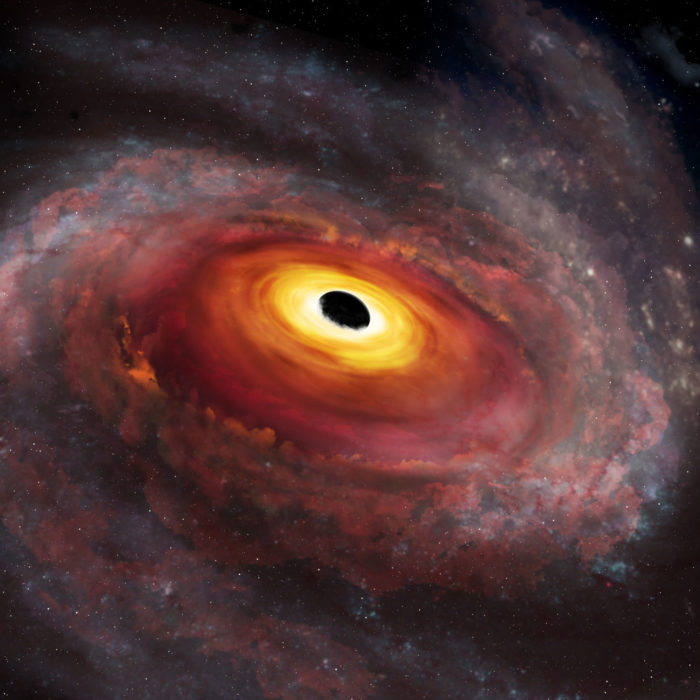Astronomers spot quasar with the most powerful winds ever seen

Scientists took a second look at a strange object and spotted the most powerful winds ever detected gusting off of a special flavor of black hole called a quasar.
A quasar forms when a supermassive black hole accelerates certain particles it cannot absorb so dramatically that they reach nearly the speed of light as they shoot away from the black hole in bright, jetlike structures. Quasars often also produce winds that can gust through the surrounding galaxy, reducing star formation. But, until now, scientists haven't ever seen such powerful quasar winds.
"While high-velocity winds have previously been observed in quasars, these have been thin and wispy, carrying only a relatively small amount of mass," Sarah Gallagher, an astronomer at Western University in Canada and lead author on the new research, said in a university statement. "The outflow from this quasar, in comparison, sweeps along a tremendous amount of mass at incredible speeds. This wind is crazy powerful, and we don't know how the quasar can launch something so substantial."
Related: 1 year ago, the world saw a black hole for the first time
The newly studied quasar, which scientists refer to as SDSS J135246.37+423923.5, is produced by a supermassive black hole containing more than 8 billion times the mass of our sun, or perhaps 2,000 times the mass of the black hole at the center of our own galaxy, according to the team's calculations.
This quasar was first discovered by a project called the Sloan Digital Sky Survey, which produces massive maps of the universe, and was revisited by the Gemini North telescope located atop Maunakea in Hawaii. The team behind the new research also needed to apply a recently developed technique for analyzing this sort of quasar, which scientists call a broad absorption line quasar after a characteristic in the data such objects produce.
"We were shocked — this isn't a new quasar, but no one knew how amazing it was until the team got the Gemini spectra," Karen Leighly, a co-author on the new research and an astronomer at the University of Oklahoma, said in the same statement. "These objects were too hard to study before our team developed our methodology and had the data we needed, and now it looks like they might be the most interesting kind of windy quasars to study."
Breaking space news, the latest updates on rocket launches, skywatching events and more!
The calculations based on this analysis suggest that this particular object is producing the most powerful quasar winds scientists have ever detected. The phenomenon is particularly intriguing because scientists believe such winds play a key role in sculpting the galaxies that surround the structure.
The researchers hope that this quasar isn't the only one of its kind. "We don't know how many more of these extraordinary objects are in our quasar catalogs that we just don't know about yet," Hyunseop Choi, first author on the new research and a graduate student at the University of Oklahoma, said in the same statement. "There could be more of these quasars with tremendously powerful outflows hidden away in our surveys."
The research is described in a paper published March 1 in the Astrophysical Journal.
- Why are black holes so weird? 'Ask a Spaceman' explains in new episode
- All your questions about the new black hole image answered
- Weird black hole physics revealed in NASA visualization
Email Meghan Bartels at mbartels@space.com or follow her @meghanbartels. Follow us on Twitter @Spacedotcom and on Facebook.
OFFER: Save 45% on 'All About Space' 'How it Works' and 'All About History'!
For a limited time, you can take out a digital subscription to any of our best-selling science magazines for just $2.38 per month, or 45% off the standard price for the first three months.

Meghan is a senior writer at Space.com and has more than five years' experience as a science journalist based in New York City. She joined Space.com in July 2018, with previous writing published in outlets including Newsweek and Audubon. Meghan earned an MA in science journalism from New York University and a BA in classics from Georgetown University, and in her free time she enjoys reading and visiting museums. Follow her on Twitter at @meghanbartels.


